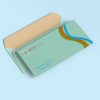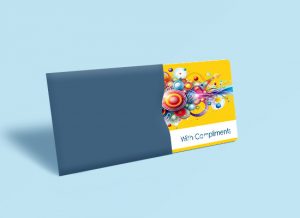Short Description
Envelopes
Related Products
Additional Information
Envelopes
A Versatile and Essential Tool for Communication and Organization
Envelopes are more than just simple paper containers—they are essential tools that facilitate secure communication, professional presentation, and personal expression. Whether for business, personal, or creative purposes, envelopes serve as the first impression for the contents they protect. Their wide variety of shapes, sizes, materials, and designs ensures they meet the diverse needs of individuals and businesses alike. This comprehensive product description explores the various types, uses, materials, and benefits of envelope.
1. Types of Envelopes
1.1. Business Envelopes
Business envelope are designed for professional communication. They are often used to send letters, invoices, statements, or contracts. Typically, they feature a clean, no-frills design for a professional look.
- #10 Envelopes (4.125” x 9.5”): The most common size for mailing business letters.
- Window Envelope: Feature a clear window that reveals the recipient’s address, eliminating the need to print it on the envelope.
- Security Envelope: Have an inner pattern to protect sensitive information from being seen through the envelope.
- Self-Sealing Envelope: Equipped with peel-and-seal adhesive strips for quick and easy closure.
1.2. Invitation and Greeting Card Envelope
For events and special occasions, this envelope is designed to enhance the presentation of invitations or greeting cards.
- A7 Envelope (5.25” x 7.25”): A popular size for greeting cards and invitations.
- Square Envelope: Used for unique, modern invitation designs.
- V-Flap or Euro-Flap Envelope: Feature an elegant, pointed flap, perfect for weddings or formal events.
- Colored or Textured Envelope: Available in a wide range of colors and finishes, from matte to metallic.
1.3. Mailing and Shipping Envelope
These are larger, more durable envelope designed for mailing heavier documents or items.
- Manila Envelope: Typically made from kraft paper, ideal for documents, reports, or portfolios.
- Padded Envelope: Lined with bubble wrap or foam for mailing fragile or delicate items.
- Tyvek Envelope: Lightweight, tear-resistant, and water-resistant, perfect for important documents.
1.4. Specialty Envelope
Specialty envelope are designed for creative or non-traditional uses, often featuring unique shapes or materials.
- Translucent Envelope: Made from vellum or frosted plastic, allowing a sneak peek of the contents inside.
- Foil-Lined Envelope: Offer a luxurious touch with metallic linings, ideal for premium invitations or holiday cards.
- Custom-Printed Envelope: Feature logos, designs, or personalized messages for branding or personal flair.
2. Materials Used in Envelope
The material used in an envelope contributes to its durability, appearance, and feel. Common materials include:
2.1. Paper Stock
Paper is the most commonly used material for envelopes, and it comes in various weights and finishes:
- Bond Paper: Lightweight and smooth, ideal for everyday use.
- Kraft Paper: Durable and eco-friendly, often used for manila envelope.
- Linen or Cotton Paper: Adds a textured, premium feel for formal occasions.
- Recycled Paper: Environmentally friendly, made from post-consumer waste.
2.2. Tyvek
A synthetic material known for being lightweight, tear-resistant, and water-resistant. Tyvek envelopes are ideal for protecting important documents during transit.
2.3. Plastic or Poly Mailers
Used for shipping non-fragile items, plastic or poly mailers are waterproof and lightweight, reducing shipping costs while ensuring protection.
3. Key Features and Benefits
Envelopes are designed with features that make them functional, secure, and appealing:
3.1. Security Features
Many envelopes include features to protect the contents:
- Tamper-Evident Seals: Indicate if the envelope has been opened before reaching the recipient.
- Security Tinting: Inner printing that obscures the visibility of the contents.
- Self-Adhesive Strips: Provide a secure and easy-to-use closure.
3.2. Customization Options
Businesses and individuals often use customized envelopes to make a lasting impression:
- Branding: Custom printing with logos, return addresses, or unique designs.
- Color and Texture Choices: Enhance visual appeal and reflect personal or brand identity.
- Die-Cut Windows: Add a touch of creativity by showcasing parts of the contents.
3.3. Eco-Friendly Options
Many envelopes are made from recycled materials or are biodegradable, offering an environmentally conscious choice for consumers and businesses.
4. Applications of Envelopes
Envelopes are used in a wide variety of contexts, from everyday correspondence to specialized applications:
4.1. Business Communication
Businesses rely on envelope for professional correspondence, including sending invoices, contracts, and marketing materials. Custom-printed business envelopes enhance brand recognition.
4.2. Personal Correspondence
Envelope add a personal touch to handwritten letters, greeting cards, and invitations, making them perfect for special occasions or everyday use.
4.3. Events and Celebrations
From weddings and birthdays to corporate events, envelopes play a crucial role in delivering beautifully crafted invitations.
4.4. Mailing and Shipping
Padded and durable envelope ensure safe delivery of products, documents, and other items, making them indispensable for e-commerce and postal services.
4.5. Creative and Artistic Uses
Envelopes are also used in crafts, scrapbooking, and creative projects, offering endless possibilities for personalization and artistic expression.
5. Choosing the Right Envelope
Selecting the right envelope involves considering the following factors:
5.1. Size
Choose an envelope size that fits the contents snugly without bending or crumpling:
- Standard Letter Size: #10 envelope for business letters.
- Invitation Size: A7 for standard invitations or A2 for smaller cards.
- Large Envelopes: 9” x 12” for documents and catalogs.
5.2. Material
Select the material based on durability, appearance, and purpose:
- Paper for General Use: Everyday correspondence or simple mailings.
- Padded or Tyvek for Protection: Mailing fragile or valuable items.
5.3. Closure Type
Consider the ease of use and security:
- Peel-and-Seal: Quick and convenient.
- Gummed Flaps: Require moistening for closure.
- String-and-Button: Reusable and ideal for interoffice use.
5.4. Design and Color
Match the envelope’s design to the occasion or brand identity:
- Formal Events: Classic white or cream envelopes with elegant flaps.
- Creative Projects: Bright colors, patterns, or foil accents.
6. Conclusion
Envelopes are more than just containers for documents and letters—they are tools of communication, expressions of style, and symbols of professionalism. With a wide range of sizes, materials, and designs available, envelopes cater to every need, from formal business correspondence to personal letters and creative endeavors. Whether you’re seeking practicality, elegance, or customization, the right envelope enhances the impact of what’s inside, ensuring your message is delivered with style and care.
Get Your Quote
My Account
About Us
Our Products
Contact
Follow Us On
We Accept


















